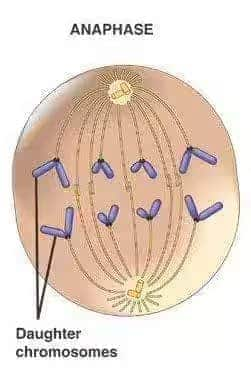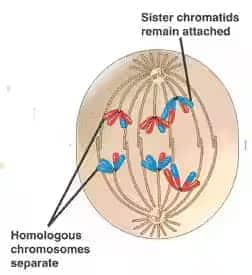NCERT Solutions For Class 11 Biology Chapter 10 - Cell Cycle and Cell Division
The NCERT Solutions for Class 11 Biology Chapter 10 Cell Cycle and Cell Division explain how cells grow and divide. It includes how cells pass the genetic information through different stages. All the solutions are written in a step-by-step manner by the subject experts. By referring to these, students can also learn the sequence of cell division without confusion. Following the NCERT Solutions, they can develop a solid understanding of biology and score well in school exams and in competitive exams like NEET.
This Story also Contains
- Download Cell Cycle and Cell Division Class 11 Questions and Answers PDF
- Access Class 11 Biology Chapter 10 Cell Cycle and Cell Division Question Answer (Exercise Questions)
- Approach to Solve Cell Cycle and Cell Division Class 11 Question Answer
- Important Questions of NCERT Class 11 Biology Chapter 10 Cell Cycle and Cell Division
- What Students Learn from Cell Cycle and Cell Division NCERT Solutions
- Why Class 11 Biology Chapter 10 Cell Cycle and Cell Division NCERT Solutions are Important?
- What Extra Should Students Study Beyond the NCERT for NEET?
- Chapter-Wise NCERT Solutions for Class 11 Biology
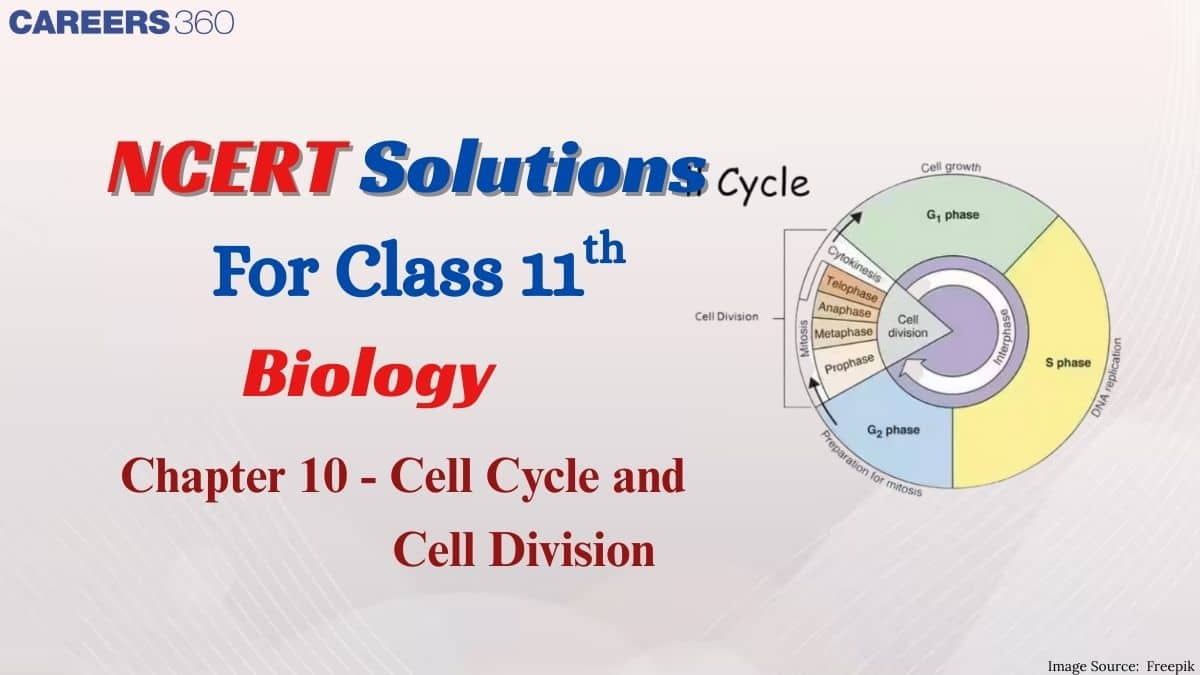
Cell Cycle and Cell Division Class 11 question answer explain the different phases, such as interphase, mitosis, and meiosis. These solutions also make it easier to connect theoretical concepts with well-labeled diagrams for better revision. Cell Cycle and Cell Division Class 11 questions and answers PDF also highlight the importance of checkpoints that regulate the cycle and prevent errors during cell division. Students can learn how to write answers in the exam with the help of the NCERT Solutions for Class 11 Biology.
Download Cell Cycle and Cell Division Class 11 Questions and Answers PDF
Chapter 10 deals with how cells grow, divide, and reproduce through various stages. Students can easily download the Cell Cycle and Cell Division Class 11 questions and answers PDF from the link given below to study in an organized and systematic way.
Also Read,
Access Class 11 Biology Chapter 10 Cell Cycle and Cell Division Question Answer (Exercise Questions)
The detailed answers to all the questions given in the textbook are given below. All the answers are prepared according to the latest NCERT guidelines, so that students do not miss anything. Doing regular practice of the Class 11 Biology Chapter 10 Cell Cycle and Cell Division question answers improves understanding.
Q1. What is the average cell cycle span for a mammalian cell?
Answer:
The average cell cycle span for a mammalian cell is 24 hours.
Q2. Distinguish cytokinesis from karyokinesis.
Answer:
The differences between cytokinesis and karyokinesis are as follows:
Cytokinesis | Karyokinesis |
The process of division of the cytoplasm is called cytokinesis | The process of division of the nucleus is called karyokinesis |
Cytokinesis takes place after the end of the M-phase | Karyokinesis takes place during the M-phase |
Q3. Describe the events taking place during the interphase.
Answer:
Interphase is the stage at which the cell makes preparations for division. It consists of three phases:
G₁ phase: The cell increases in size and synthesizes RNA, proteins, and molecules required for DNA replication. The cell determines whether to proceed in the cycle or enter a resting phase (G₀).
S phase: DNA replication takes place, doubling the DNA content but not changing the number of chromosomes. During this phase, centrosome duplication also occurs.
G₂ phase: The cell gets ready for mitosis by producing additional RNA, proteins, and organelles.
Q4. What is the Go (quiescent phase) of the cell cycle?
Answer:
G₀ is a resting phase in which the cell halts dividing but does not die. These cells may remain metabolically active but stop progressing through the cycle. Many neurons and cardiac muscle cells enter G₀ permanently and generally do not re-enter the cycle, whereas some other cells may rejoin the cycle if required.
Q5. Why is mitosis called equational division?
Answer:
Mitosis is referred to as equational division since it gives rise to two daughter cells with the same number of chromosomes as the parent cell.
Q6. Name the stage of the cell cycle at which one of the following events occurs:
(i) Chromosomes are moved to the spindle equator.
Answer:
During metaphase, the chromosomes move to the spindle equator and align themselves there.
Q6. Name the stage of the cell cycle at which one of the following events occurs:
(ii) Centromere splits and chromatids separate.
Answer:
During anaphase, the centromere splits, and chromatids are separated. These chromatids, after separation, move to the opposite poles.
Q6. Name the stage of the cell cycle at which one of the following events occurs:
(iii) Pairing between homologous chromosomes takes place.
Answer:
The pairing between homologous chromosomes takes place during zygotene of prophase I of meiosis I. As a result of this pairing, bivalents are formed.
Q6. Name the stage of the cell cycle at which one of the following events occurs:
(iv) Crossing over between homologous chromosomes takes place.
Answer:
Crossing over between homologous chromosomes takes place during the pachytene stage of prophase I of meiosis I.
(a) synapsis
Draw a diagram to illustrate your answer.
Answer:
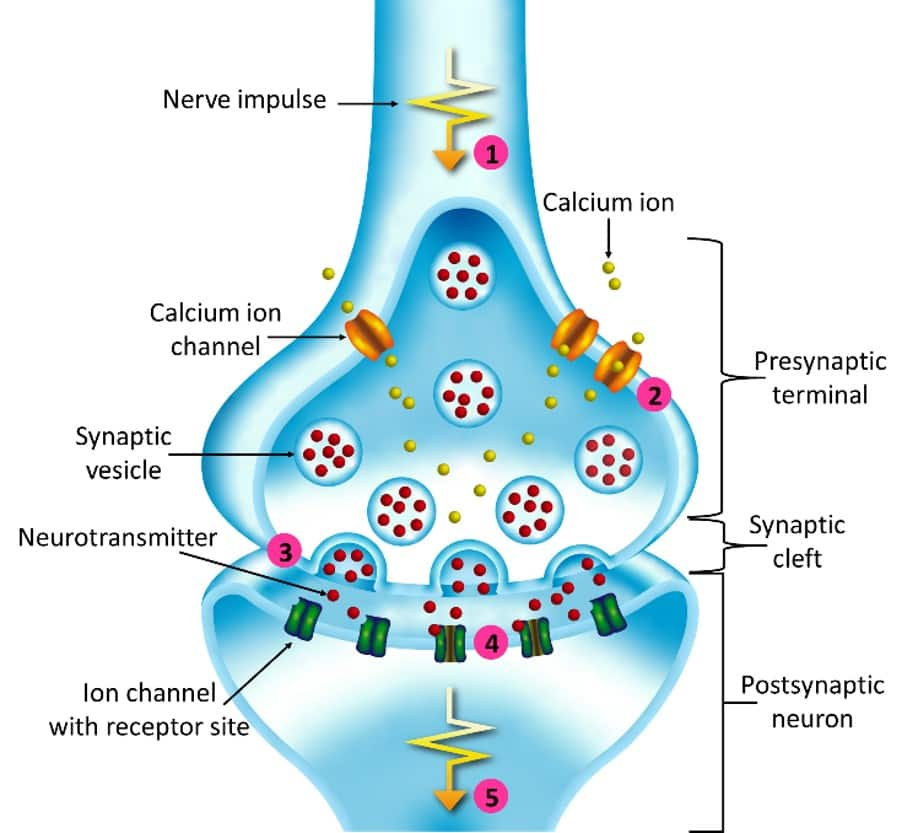
Synapsis- The process of the pairing of homologous chromosomes during the zygotene stage of prophase I of meiosis I is called synapsis. During synapsis, a synaptonemal complex is formed by the homologous chromosomes, which are referred to as a bivalent or a tetrad.
(b) bivalent
Draw a diagram to illustrate your answer.
Answer:
Bivalent- it refers to the structure formed by a pair of synapsed homologous chromosomes.

(c) chiasmata
Draw a diagram to illustrate your answer.
Answer:
Chiasmata- These are points of attachment between homologous chromosomes during their separation in diplotene to the metaphase I stage of meiosis. Chiasmata are initially formed in the regions of crossing over between nonsister chromatids, but later on, they tend to shift sideways.
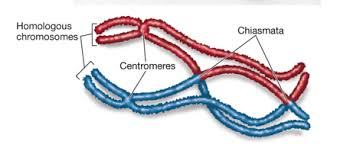
Q8. How does cytokinesis in plant cells differ from that in animal cells?
Answer:
The process of cytokinesis differs in plant and animal cells
| Cytokinesis in plants | Cytokinesis in animals |
| It occurs by the cell plate method | It takes place by the cleavage method |
| The spindle persists during cytokinesis | The spindle starts to degenerate after anaphase |
| The cell plate grows centrifugally | Cleavage takes place centripetally |
| The new cell wall and membrane are formed from Golgi-derived vesicles | The new cell membrane is formed by the constriction of the plasma membrane |
Answer:
- In the formation of a male gamete (spermatogenesis), all four sperm cells are equal in size.
- During the process of female gamete development (oogenesis), a large egg cell and three smaller polar bodies are produced.
Q10. Distinguish the anaphase of mitosis from anaphase I of meiosis.
Answer:
Anaphase of mitosis | Anaphase I of meiosis |
The anaphase of mitosis involves the splitting of each chromosome at the centromere into two sister chromatids, which start moving towards the opposite poles.
| Anaphase I of meiosis I involves the separation of homologous chromosomes, while the chromatids remain attached to their centromeres.
|
Q11. List the main differences between mitosis and meiosis.
Answer: The major differences between mitosis and meiosis are discussed below in the table:
Mitosis | Meiosis |
It takes place in somatic cells | It takes place in germ cells |
The cells undergoing mitosis can be diploid or haploid | The cells that undergo meiosis are diploid |
It involves a single division producing two daughter cells at the end | It involves two divisions that give rise to four daughter cells |
The daughter cells formed after mitosis are exactly similar to their parent cell | The daughter cells formed after meiosis are neither similar to the parent one nor to one another |
The number of chromosomes remains the same after mitosis | The number of chromosomes is reduced to half after meiosis |
Mitosis helps in the multiplication of cells, healing, and repair | Meiosis is involved in the formation of gametes and genetic variation |
Answer:
Meiosis is significant because:
It produces gametes for sexual reproduction.
It maintains the chromosome number stable in the species.
It creates genetic variation by crossing over and independent assortment of chromosomes.
It enables new genetic combinations to develop, helping in evolution.
Q13. Discuss with your teacher about
(i) haploid insects and lower plants, where cell division occurs
Answer:
In some lower plants, algae, and fungi, the zygote undergoes meiosis immediately after its formation. This type of meiosis is called zygotic meiosis, and the life cycle is known as the haplontic life cycle.
Q13. Discuss with your teacher about
(ii) some haploid cells in higher plants where cell division does not occur.
Answer:
Synergids and antipodals are haploid cells in higher plants where cell division does not occur.
Q14. Can there be mitosis without DNA replication in the 'S' phase?
Answer:
No, mitosis cannot occur without DNA replication during the S phase. Without copying DNA, the daughter cells will contain fewer chromosomes than required.
Q15. Can there be DNA replication without cell division?
Answer:
Yes, DNA can replicate without cell division. For instance, in polyploidy, chromosomes replicate many times without the cell dividing, resulting in excess DNA.
(i) number of chromosomes (N) per cell
Answer:
The number of chromosomes decreases during anaphase I of meiosis I, when homologous chromosomes separate, resulting in daughter cells being haploid.
(ii) amount of DNA content (C) per cell
Answer:
DNA content doubles during the S phase since replication takes place. During meiosis I, the DNA content per cell is reduced to half because homologous chromosomes separate. After meiosis II, the separation of sister chromatids ensures that each gamete receives the correct haploid DNA content.
Check the NCERT Books and NCERT Syllabus here:
Approach to Solve Cell Cycle and Cell Division Class 11 Question Answer
The students should begin by understanding the terms, such as interphase, mitosis, and meiosis, before starting to solve the questions.
The cell cycle can be broken down into different phases, and the sequence should be revised carefully.
Flowcharts and labeled diagrams should be used for better memory. All diagrams are included in the Class 11 Biology Chapter 10 Cell Cycle and Cell Division question answer.
By solving the exemplar problems, students can have a thorough understanding of the chapter.
Practice the questions given in the NCERT Solutions for Class 11 for effective learning.
Finally, regular revision should be done from the Class 11 Biology Cell Cycle and Cell Division question answer, which strengthens the concepts and boosts exam confidence.
NCERT Solutions for Class 11: Subject-wise
Important Questions of NCERT Class 11 Biology Chapter 10 Cell Cycle and Cell Division
Below are some of the important questions from this chapter, along with the solutions. To gain confidence and score well in exams, it is important to practice questions. For this purpose, students can refer to the NCERT Solutions for Class 11 Biology Chapter 10 Cell Cycle and Cell Division.
Question 1. Write five features of anaphase I of Meiosis.
Answer:
The five features of anaphase I of Meiosis are:
- Each bivalent's homologous chromosomes split out from one another.
- The homologous chromosomes that have been split travel to the opposing poles.
- The chromatids do not separate during this phase; the chromosomes do.
- There are two sister chromatids on each chromosome.
- There is a decrease in the number of chromosomes during anaphase I.
Question 2: What is the purpose of meiosis in cell division?
- Growth and tissue repair
- Production of gametes
- Genetic recombination
- DNA replication
Answer: The correct answer is option (2), Production of Gametes
Explanation: Meiosis is a special type of cell division that reduces the chromosome number by half, producing haploid gametes (sperm and eggs) from diploid cells. This ensures that when fertilization occurs, the zygote has the correct diploid number of chromosomes. It also contributes to genetic variation among offspring.
Question 3: Which of the following is checked in the M checkpoint?
- If every sister chromatid is properly affixed to the spindle fiber.
- If every sister chromatid is properly affixed to the centromere.
- If every non-sister chromatid is properly affixed to the centromere.
- If every non-sister chromatid is properly affixed to the spindle fiber.
Answer: The correct answer is option (1), if every sister chromatid is properly affixed to the spindle fiber.
Explanation: The M checkpoint, also known as the spindle checkpoint, ensures that all sister chromatids are correctly attached to the spindle fibers before the cell proceeds to anaphase. This prevents unequal chromosome separation during cell division. It helps maintain genetic stability and prevents aneuploidy.
Question 4: A bivalent of meiosis I consists of
- Four chromatids and two centromeres
- Two chromatids and two centromeres
- Two chromatids and one centromere
- Four chromatids and four centromeres
Answer: The correct answer is option (1), Four chromatids and two centromeres
Explanation: During meiosis, two homologous chromosomes couple up to produce a bivalent. When two homologous chromosomes pair, a bivalent comprises a total of four chromatids, since each chromosome is made up of two sister chromatids.
A bivalent, on the other hand, has two centromeres rather than four. This is because every chromosome has a single centromere, and the bivalent homologous chromosomes both maintain their own.
Question 5: Mitosis is characterized by
- Reduction division
- Both reduction and equal division
- Equal division
- Pairing of homologous chromosomes
Answer: The correct answer is option (3), Equal division
Explanation: The process of cell division, known as mitosis, produces two identical daughter cells when the chromosomes duplicate and are distributed equally. Each daughter cell has the same number of chromosomes as the parent cell, making them diploid. Consequently, the process of mitosis is referred to as equal division.
Question 6: During which phase of the cell cycle does DNA replication occur?
- G1 phase
- G2 phase
- S phase
- M phase
Answer: The correct answer is option (3), S phase
Explanation: The S (Synthesis) phase of the interphase is when DNA replication occurs. Each chromosome duplicates to form two sister chromatids. The number of chromosomes remains the same, but the DNA content doubles. G1 and G2 phases involve cell growth and preparation for division, while the M phase includes actual cell division.
Question 7: Crossing over occurs during
- Metaphase I
- Prophase I
- Anaphase II
- Telophase I
Answer: The correct answer is option (2), Prophase I
Explanation: Crossing over - the exchange of genetic material between non-sister chromatids of homologous chromosomes - takes place during Prophase I of Meiosis I, specifically in the pachytene stage. This process creates new gene combinations and increases genetic variation. It does not occur in metaphase, anaphase, or telophase.
What Students Learn from Cell Cycle and Cell Division NCERT Solutions
Cell growth and division are controlled by a series of events. This chapter explains how cells divide and remain in continuity throughout life.
Students understand the different phases of the cell cycle, such as interphase and M phase, and how they regulate cell growth.
Cell Cycle and Cell Division Class 11 question answer explain the process of mitosis, including prophase, metaphase, anaphase, and telophase.
Students explore the significance of meiosis in producing gametes and maintaining chromosome number.
Through the Class 11 Biology Cell Cycle and Cell Division question answer, learners also study checkpoints that control growth and prevent errors during cell division.
Why Class 11 Biology Chapter 10 Cell Cycle and Cell Division NCERT Solutions are Important?
The cell cycle and cell division chapter makes students understand how new cells are produced in the body, how existing cells grow, and how cells divide. It covers the important processes of mitosis and meiosis, which are very important for the growth, repair, and reproduction in living organisms.
- Class 11 Biology Chapter 10 Cell Cycle and Cell Division NCERT Solutions are important as they explain each stage of the life cycle easily, including G₁, S, G₂, and M phases.
- The solutions also include the detailed events of mitosis, such as spindle formation and separation of chromatids.
- Students also understand the steps of meiosis, with the help of a complete flow chart and well-labeled diagrams.
- The solutions also simplify complex processes like crossing over and cytokinesis, by which students can easily retain the concepts for a longer time.
- Students can gain clarity on the cell division stages and can prepare for the NEET and other competitive exams by going through the solutions.
What Extra Should Students Study Beyond the NCERT for NEET?
Studying concepts beyond the NCERT will help in attaining clarity for competitive exams like NEET. The NCERT Solutions for Class 11 Biology Chapter 10 Cell Cycle and Cell Division help students to answer application-based questions. Some extra concepts that can be studied are:
Concepts | NCERT | NEET |
✅ | ✅ | |
✅ | ✅ | |
✅ | ✅ | |
✅ | ✅ | |
✅ | ✅ | |
✅ | ✅ | |
✅ | ✅ | |
✅ | ✅ | |
✅ | ✅ | |
✅ | ✅ | |
✅ | ✅ | |
✅ | ✅ |
Chapter-Wise NCERT Solutions for Class 11 Biology
Below are the chapter-wise solutions by which students can focus on the important topics and perform well in exams.
Frequently Asked Questions (FAQs)
Plant Cells: Cytokinesis is by the development of a cell plate.
Animal Cells: Cytokinesis is achieved by the establishment of a cleavage furrow.
Cell cycle is regulated by checkpoints, proteins (cyclins), and enzymes (CDKs) to make sure accurate division and error prevention.
Meiosis produces genetic diversity and ensures that offspring inherit the appropriate number of chromosomes from their parents.
All the important topics included in the NCERT Solutions for Class 11 Biology Chapter 10 Cell Cycle and Cell Division are given below:
- Cell Cycle
- M Phase
- Significance of Mitosis
- Meiosis
- Significance of Meiosis
In this phase, chromosomes along with their DNA replicates. The content of DNA doubles up, however, the number of chromosomes remains the same. After replication, the daughter chromosomes remain attached in the region of the centromere. The centrosome, if present begins to divide.
Mitosis: Results in two identical cells, found in somatic (body) cells.
Meiosis: Forms four genetically unique cells containing half the number of chromosomes, takes place in reproductive cells.
The cell cycle provides growth, repair, and reproduction to organisms. It prevents the number of chromosomes in cells from being in error.
Interphase permits the cell to increase in size, replicate DNA, and prepare for cell division. It makes sure that the daughter cells have complete genetic material.
Courses After 12th
Applications for Admissions are open.
As per latest syllabus. Physics formulas, equations, & laws of class 11 & 12th chapters
JEE Main Important Chemistry formulas
Get nowAs per latest syllabus. Chemistry formulas, equations, & laws of class 11 & 12th chapters
JEE Main high scoring chapters and topics
Get nowAs per latest 2024 syllabus. Study 40% syllabus and score upto 100% marks in JEE
JEE Main Important Mathematics Formulas
Get nowAs per latest syllabus. Maths formulas, equations, & theorems of class 11 & 12th chapters
